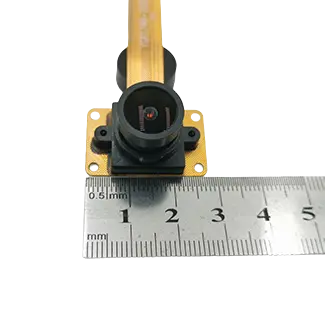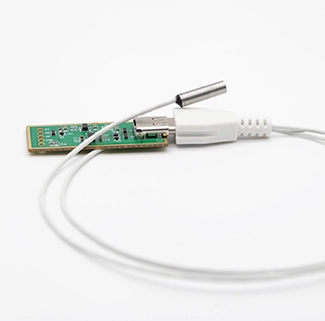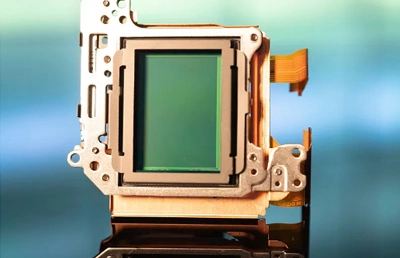ISP tuning, or Image Signal Processing tuning, is vital for optimizing camera performance. It encompasses various adjustments to ensure high-quality image output. Firstly, ISPs regulate sensor sensitivity, managing exposure to light for balanced brightness and contrast. They refine color reproduction, fine-tuning hues and saturation for lifelike rendering. Noise reduction algorithms are employed to minimize graininess, especially in low-light conditions, enhancing clarity. Sharpness adjustments enhance image crispness without compromising naturalness. White balance calibration ensures accurate color representation under different lighting conditions. ISP tuning also involves optimizing dynamic range, preserving details in both highlights and shadows. Furthermore, it fine-tunes autofocus mechanisms for swift and accurate focusing. Overall, ISP tuning is indispensable for achieving superior image quality and overall camera performance.
How CK Vision’s Camera ISP Tuning Helps Produce Stunning Visuals
CK vision ISP tuning involves optimizing various parameters like exposure, color reproduction, noise reduction, sharpness, white balance, dynamic range, and autofocus to enhance image quality and camera performance.
Noise Reduction
ISP tuning of Noise Reduction (NR) is a crucial aspect in digital imaging, aiming to mitigate unwanted noise artifacts present in captured images. Through sophisticated algorithms, NR mechanisms identify and suppress noise while preserving image details. The process begins with the identification of noise patterns, which can arise from sensor imperfections, high ISO settings, or low-light conditions.
Once noise is identified, NR algorithms employ a variety of techniques to suppress it without excessively blurring or sacrificing image sharpness. Spatial noise reduction targets individual pixels or small groups, smoothing out variations between neighboring pixels. Temporal noise reduction analyzes consecutive frames to distinguish noise from actual image content, reducing noise without compromising moving objects.
ISP tuning optimizes NR parameters such as strength, threshold, and filtering methods to achieve the desired balance between noise reduction and detail preservation. This tuning process involves extensive testing across various lighting conditions and scenarios to ensure optimal performance.
Additionally, ISP tuning considers the trade-offs between noise reduction and image sharpness, as aggressive NR can lead to the loss of fine details and texture. Therefore, fine-tuning NR algorithms is essential to maintain image clarity while effectively suppressing noise, resulting in cleaner and more visually appealing images.
Dynamic Range
ISP tuning of dynamic range (DR) plays a pivotal role in optimizing camera performance by preserving details in both shadowed and highlighted areas of an image. Dynamic range refers to the range of light intensities that a camera can capture while retaining detail.
Through ISP tuning, various techniques are employed to extend dynamic range, such as HDR (High Dynamic Range) imaging. This involves capturing multiple exposures of the same scene and combining them to produce a single image with enhanced dynamic range. Tone mapping algorithms are then applied to adjust the tonal distribution, ensuring a balanced representation of both dark and bright areas.
Furthermore, ISP tuning optimizes parameters like exposure, gamma correction, and contrast enhancement to effectively manage dynamic range without compromising image quality. Algorithms may selectively boost exposure in shadowed regions while preventing overexposure in highlights, resulting in a well-balanced image.
Fine-tuning dynamic range algorithms involves meticulous calibration and testing across different lighting conditions to ensure optimal performance. By expanding dynamic range, ISP tuning enhances the camera's ability to capture scenes with high contrast, resulting in more visually compelling and lifelike images. Ultimately, ISP tuning of dynamic range is essential for delivering images with rich detail and depth.
Sharpness and Detail
ISP tuning of sharpness and detail enhancement plays a critical role in refining image quality by enhancing the clarity and crispness of captured images. This process involves adjusting parameters to optimize the balance between sharpening edges and preserving natural image textures.
Sharpness enhancement algorithms identify edges and contours within the image and apply localized contrast adjustments to make them appear more distinct. Careful tuning of these algorithms ensures that edges are sharpened without introducing artifacts or halos.
Detail enhancement focuses on bringing out fine textures and subtle details in the image, such as intricate patterns or textures in clothing or foliage. By selectively enhancing these details, ISP tuning can improve the overall perception of image sharpness and depth.
To achieve optimal results, ISP tuning involves adjusting parameters such as edge detection sensitivity, sharpening strength, and detail enhancement level. These adjustments are iteratively refined through testing across a range of scenes and lighting conditions to ensure consistent performance.
Balancing sharpness and detail enhancement is crucial, as overly aggressive processing can result in unnatural-looking images with exaggerated textures or artifacts. Therefore, ISP tuning aims to strike a balance between enhancing sharpness and preserving the integrity of the original image, ultimately delivering images that are visually appealing and true to life.
Low-Light Performance
ISP tuning for low-light performance is essential in digital cameras to ensure high-quality image capture even in challenging lighting conditions. It involves optimizing various parameters to enhance sensitivity, reduce noise, and improve overall image quality.
Firstly, ISP tuning adjusts sensor sensitivity to capture more light in low-light situations while minimizing noise. This often involves increasing ISO sensitivity or adjusting sensor gain to amplify the signal from the sensor.
Additionally, noise reduction algorithms are fine-tuned to effectively suppress noise without sacrificing image detail. These algorithms employ techniques such as spatial and temporal noise reduction to minimize graininess and artifacts in low-light images.
Furthermore, ISP tuning may involve adjusting exposure settings, such as shutter speed and aperture, to optimize light capture without overexposing or underexposing the image.
White balance calibration is also crucial in low-light conditions to ensure accurate color reproduction and prevent color casts.
Moreover, ISP tuning may include enhancements to autofocus performance to ensure quick and accurate focusing even in dimly lit environments.
Overall, ISP tuning for low-light performance aims to deliver clear, sharp, and well-exposed images under challenging lighting conditions, providing users with the ability to capture high-quality photos in any situation.
Uncover the CK Vision's Comprehensive Camera Development Services
We employ camera ISP tuning to enhance our product's performance, ensuring superior image quality for our customers. By fine-tuning various parameters such as sensitivity, noise reduction, and color accuracy, we optimize the camera's capabilities to meet the diverse needs of our users. Our commitment to ISP tuning allows us to deliver exceptional results, whether it's capturing vibrant landscapes or detailed portraits, ensuring our customers always receive the best possible imaging experience.
In our quest to provide top-tier camera solutions, we collaborate closely with leading camera module manufacturers and industrial camera manufacturers, ensuring that our components are of the highest quality and our technological approaches are cutting-edge.
ISP Tuning in Hisilicon
We offer ISP tuning services on the Hisilicon platform, ensuring optimal image quality for our customers. With our expertise in fine-tuning ISP parameters, we deliver enhanced performance across various lighting conditions, guaranteeing superior imaging experiences for users of Hisilicon-powered devices.
Camera Debug
We offer comprehensive debugging services for camera sensor drivers and ISPs, ensuring seamless integration and optimal performance. Our expertise in identifying and resolving issues at the sensor and ISP levels guarantees reliable operation and superior image quality. Trust us for meticulous debugging to enhance the functionality and efficiency of your camera systems.
Camera Sensor Driver Support
We specialize in providing robust support for camera sensor drivers, ensuring smooth integration and optimal functionality. Our team offers expertise in resolving driver-related issues, optimizing performance, and enhancing compatibility across various platforms. Count on us for comprehensive assistance to ensure your camera sensors operate seamlessly, delivering high-quality imaging experiences
What Roles Do Experts Play in ISP Tuning?
Experts in ISP tuning play critical roles in optimizing image signal processing to achieve superior camera performance. Their responsibilities encompass various aspects:
Understanding Hardware: Experts need to comprehend the intricacies of camera hardware, including sensors, lenses, and processing units, to effectively tune ISP algorithms.
Algorithm Development: They design and refine ISP algorithms tailored to specific camera models and applications, considering factors like noise reduction, color correction, and dynamic range enhancement.
Parameter Optimization: Experts fine-tune ISP parameters such as exposure, white balance, sharpness, and contrast to balance image quality and processing speed, ensuring optimal performance in different scenarios.
Quality Assurance: They conduct rigorous testing to evaluate ISP performance under various lighting conditions, identifying areas for improvement and ensuring consistency and reliability in image output.
Collaboration: Experts collaborate with hardware engineers, software developers, and product managers to integrate ISP tuning seamlessly into camera systems, considering hardware limitations and user requirements.
Continuous Improvement: They stay updated with advancements in imaging technology and customer feedback to iteratively enhance ISP algorithms, maintaining competitiveness and meeting evolving user expectations.
Overall, experts in ISP tuning play a pivotal role in leveraging cutting-edge technology to deliver exceptional image quality and user experiences in modern camera systems.








